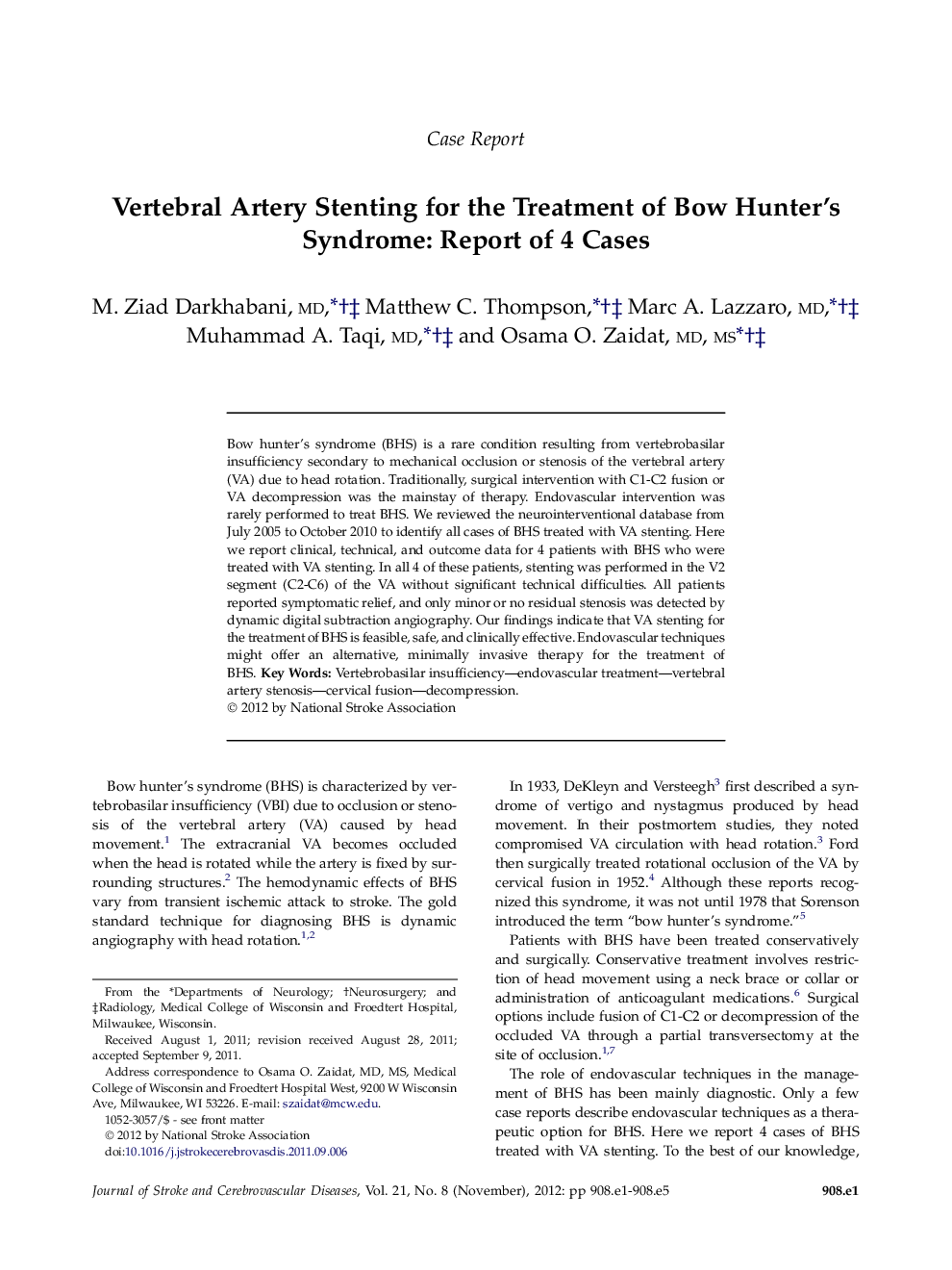| Article ID | Journal | Published Year | Pages | File Type |
|---|---|---|---|---|
| 2711075 | Journal of Stroke and Cerebrovascular Diseases | 2012 | 5 Pages |
Abstract
Bow hunter's syndrome (BHS) is a rare condition resulting from vertebrobasilar insufficiency secondary to mechanical occlusion or stenosis of the vertebral artery (VA) due to head rotation. Traditionally, surgical intervention with C1-C2 fusion or VA decompression was the mainstay of therapy. Endovascular intervention was rarely performed to treat BHS. We reviewed the neurointerventional database from July 2005 to October 2010 to identify all cases of BHS treated with VA stenting. Here we report clinical, technical, and outcome data for 4 patients with BHS who were treated with VA stenting. In all 4 of these patients, stenting was performed in the V2 segment (C2-C6) of the VA without significant technical difficulties. All patients reported symptomatic relief, and only minor or no residual stenosis was detected by dynamic digital subtraction angiography. Our findings indicate that VA stenting for the treatment of BHS is feasible, safe, and clinically effective. Endovascular techniques might offer an alternative, minimally invasive therapy for the treatment of BHS.
Keywords
Related Topics
Health Sciences
Medicine and Dentistry
Clinical Neurology
Authors
M. Ziad MD, Matthew C. Thompson, Marc A. MD, Muhammad A. MD, Osama O. MD, MS,
